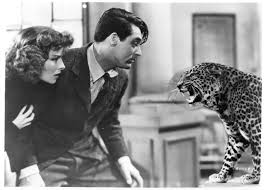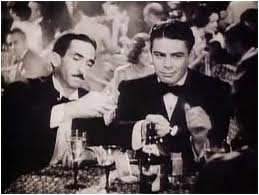“Bringing Up Baby”, directed by Howard Hawks, is a screwball comedy genre film that tells the awkward love story of a crazed blonde and an engaged man who is supposed to be married the next day. This film is anything but ordinary. It has the distinction of being both hilarious and painfully annoying at the same time.
This movie is a classic because it involves actors working with live animals, it has extravagant stunts, and it’s unique screwball comedy is fitting for this film. “Baby” in this film is a leopard that happens to be a gift to, the main character, Susan’s aunt. Susan uses her annoying antics to swindle David into assisting her as she transports baby to her aunt’s house.
The clip below has an example of the madness that ensues during the film. This is one of the funniest moments as well as a very shocking moment in film. Susan takes David’s clothes, so he puts on her robe. When Susan’s aunt sees him, he jokingly says that he became “gay all of a sudden.” This was at a time where being gay was a taboo subject. The filmmakers took a huge risk, but it helped to make the movie funny. This is one of the many reasons why Bringing Up Baby will always be a fan favorite and classic.
Watch the video below. Bringing Up Baby 1938





